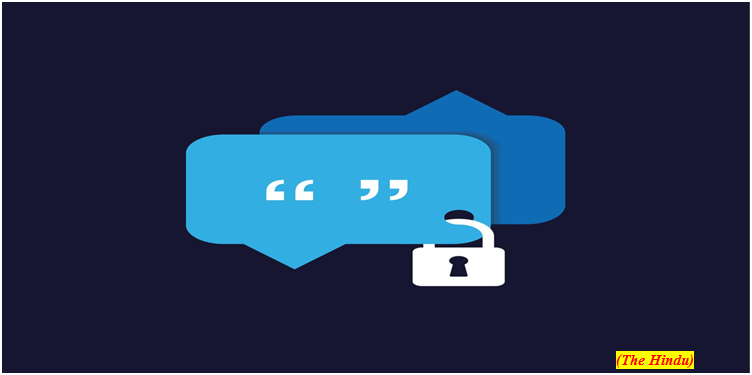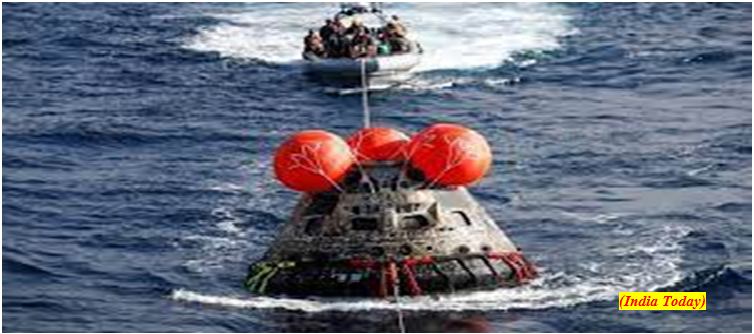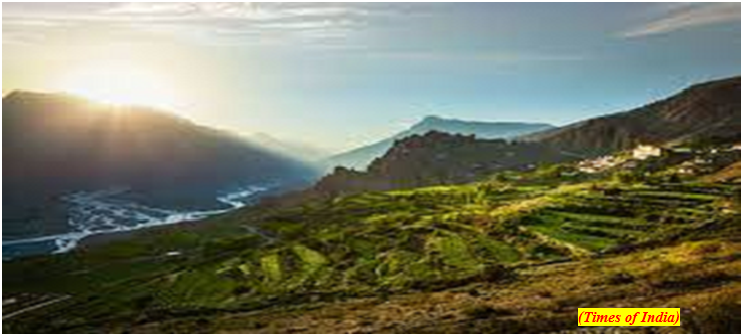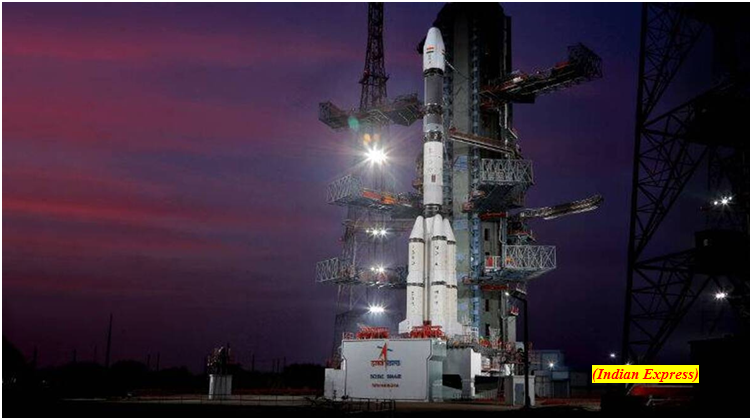What is end to end encryption and why are tech companies focusing on it (GS Paper 3, Science and Tech)

Why in news?
- Recently, Apple announced it will be increasing the number of data points protected by end-to-end encryption on iCloud from 14 to 23 categories. The company claimed that with end-to-end encryption, user data will be protected even in case data is breached in the cloud.
- Similarly, Elon Musk, in November, said that he wanted Twitter DMs to be encrypted.
Concerns:
- However, government agencies are not happy with the development. The FBI said that while it remains a strong advocate of encryption, it is deeply concerned with the threat that end-to-end encryption and user-only access pose.
- The agency insisted they hinder its ability to protect Americans from cyber-attacks, violence against children, and terrorism.
What is end-to-end encryption?
- End-to-end encryption is a communication process that encrypts data being shared between two devices. It prevents third parties like cloud service providers, internet service providers (ISPs) and cybercriminals from accessing data while it is being transferred.
- The process of end-to-end encryption uses an algorithm that transforms standard text into an unreadable format. This format can only be unscrambled and read by those with the decryption keys, which are only stored on endpoints and not with any third parties including companies providing the service.
- End-to-end encryption has long been used when transferring business documents, financial details, legal proceedings, and personal conversations.
- It can also be used to control users’ authorisation when accessing stored data, which seems to be what Apple intends to do.
Where is it used?
- End-to-end encryption is used to secure communications. Some of the popular instant-messaging apps that use it are Signal, WhatsApp, iMessage, and Google messages.
- However, instant messaging is not the only place where user data is protected using end-to-end encryption. It is also used to secure passwords, protect stored data and safeguard data on cloud storage.
Why are tech companies using it?
- Apple stated that the total number of data breaches more than tripled between 2013 and 2021.
- The focus on end-to-end encryption seems to stem from the company’s desire to position itself as a provider of secure data storage and transfer services.
- End-to-end encryption is also seen as a technology that secures users’ data from snooping by government agencies, making it a sought-after feature by activists, journalists, and political opponents.
What does it mean for users?
- End-to-end encryption ensures that user data is protected from unwarranted parties including service providers, cloud storage providers, and companies that handle encrypted data.
- Apple on its support page shared that end-to-end encrypted data can only be decrypted by trusted devices where users are signed with their Apple ID. No one else can access this data and it remains secure even in the case of a data breach in the cloud storage.
- The data can only be accessed with access to the device passcode, password, recovery contact, or recovery key. The technology also makes it harder for service providers to share user information from their services with authorities.
- However, end-to-end encryption does not protect metadata, which includes information like when a file was created, the date when a message is sent and the endpoints between which data was shared
Why are government agencies unhappy with it?
- The FBI in a statement expressed displeasure at the idea of increasing use of end-to-end encryption by technology companies.
- It said that while it remains a strong advocate of encryption schemes that give “lawful access by design”, that would enable tech companies “served with a legal order” to decrypt data, it “continues to be deeply concerned with the threat end-to-end and user-only-access encryption pose”.
- Attempts by government agencies across the globe, in the past, to access encrypted data hosted and stored by tech companies have met with strong resistance.
- In 2019, the U. S., the U. K., and Australia planned to pressure Facebook to create a backdoor into its encrypted messaging apps.
- Australia, in 2018, passed laws that would force tech companies and service providers to build capabilities allowing law enforcement secret access to messages on platforms like WhatsApp and Facebook.
- The legislation was necessary to prevent “terrorists” and other serious criminals from hiding from the law.
NASAs Orion capsule splashes down in Pacific after journey to the moon
(GS Paper 3, Science and Tech)
Why in news?
- Recently, NASA's Orion capsule splashed down in the Pacific ocean on after making an uncrewed voyage around the moon, winding up the inaugural mission of the U.S. agency's new Artemis lunar program 50 years to the day after Apollo's final moon landing.

Details:
- The gumdrop-shaped Orion capsule, carrying a simulated crew of three mannequins wired with sensors, plunked down in the ocean off Mexico's Baja California peninsula, demonstrating a high-stakes homecoming before NASA flies its first crew of Artemis astronauts around the moon in the next few years.
- The splashdown capped a 25-day mission less than a week after passing about 79 miles (127 km) above the moon in a lunar fly-by, and came about two weeks after reaching its farthest point in space, nearly 270,000 miles (434,500 km) from Earth.
Orion voyage:
- The capsule blasted off on Nov. 16 from the Kennedy Space Center at Cape Canaveral, Florida, atop Nasa's towering next-generation Space Launch System (SLS), now the world's most powerful rocket and the biggest NASA has built since the Saturn V of the Apollo era.
- The debut SLS-Orion voyage kicked off Apollo's successor program, Artemis, aimed at returning astronauts to the lunar surface this decade and establishing a sustainable base there as a stepping stone to future human exploration of Mars.
Why is re-entry critical?
- A top objective is to test the durability of Orion’s heat shield as it re-enters Earth’s atmosphere at 24,500 miles (39,400 km) per hour, comparatively faster than re-entries from the space station.
- The re-entry will test whether the heat shield can withstand atmospheric friction expected to raise temperatures outside the capsule to nearly 5,000 degrees Fahrenheit (2,760 degrees Celsius).
- The re-entry will also test the advanced guidance and thruster systems used to steer the capsule from the moon to its proper re-entry point and through descent, maintaining the spacecraft at just the right angle to avoid burning up.
Artemis I:
- By coincidence, the return to Earth of Artemis I unfolded on the 50th anniversary of the Apollo 17 moon landing of Gene Cernan and Harrison Schmitt on Dec. 11, 1972.
- They were the last of 12 NASA astronauts to walk on the moon during a total of six Apollo missions starting in 1969.
What next after Artmeis-1?
- If the Artemis-1 mission succeeds, a crewed Artemis II flight around the moon and back could come as early as 2024, followed within a few years by the program’s first lunar landing of astronauts, one of them a woman, with Artemis III.
- Sending astronauts to Mars is expected to take at least another decade and a half to achieve.
UP to develop one wetland in every district to promote eco-tourism
(GS Paper 3, Environment)
Why in news?
- The Uttar Pradesh forest department has decided to develop one wetland in every district as an ecotourism site under the 'One District One Wetland' (ODOW) initiative, which is similar to One District One Product (ODOP) scheme of the state government.
- Wetlands should be developed to promote ecotourism in every district.

Details:
- While there are a lot of wetlands and Important Bird Areas (IBAs) in the state, those which lie outside protected areas will be conserved under the ODOW initiative.
- As per a conservative estimate, there are around 1. 2 lakh wetlands that lie outside the forest and around 500 inside it.
- According to satellite data from 2020, of 1.2 lakh wetlands, at least 23,800 are in more than 2.2-hectare area, and need conservation.
- Revenue records, however, peg the number of such wetlands around 26,000 in the state.
Notified wetlands:
- The state government in 2019 had notified the UP Wetlands Authority to prepare wetland atlas for the state, including the ones lying outside forest.
- Ramgarh Taal of Gorakhpur, which lies outside forest, was the first wetland on the lines of ODOP which was notified in 2020.
- The wetlands that are notified will be protected under the Wildlife Protection Act.
Ramsar Sites:
- A Ramsar site is a wetland designated to be of international importance under the Ramsar Convention signed in Iran in 1971.
- UP has at least ten wetlands which are Ramsar sites. Bakhira sanctuary was declared the tenth Ramsar site from the state in February this year.
- Nawabganj in Unnao, Parvati Aranga in Gonda, Saman in Mainpuri, Samaspur in Rae Bareli, Sandi in Hardoi, Sarsai Nawar in Etawah, Keetham lake in Sur Sarovar sanctuary in Agra and Upper Ganga River, the stretch from Brigghat to Narora, which was the state's first Ramsar site declared in 2005, are the others.
Focus on commercial use of NavIC, ISROs future satellites to get additional frequency
(GS Paper 3, Science and Tech)
Why in news?
- With an aim to promote the civilian use of NAVigation with the Indian Constellation (NavIC), Indian Space Research Organisation (ISRO), is introducing the L1 frequency in all its future satellites.
- The next satellites, starting from NVS-01 onwards, will have an L1 band for civilian navigational use.

L1 frequency:
- The L1 frequency, one of the most commonly used frequencies in the Global Positioning System (GPS), will increase the use of the regional navigation system in wearable devices and personal trackers that use low-power, single-frequency chips.
- At present, the satellites operate on two frequencies — L5 and S bands.
- The NVS-01 satelliteis set to replace one of ISRO’s seven navigational satellites currently in space. Two of these satellites; IRNSS-1B and IRNSS-1C will complete their 10-year mission life in 2024.
Background:
- The NavIC-enabled chipsets first made their way to cell phones in 2019 even though the first three satellites of the constellation were launched in 2013 and 2014.
- In fact, a 2018 report by the Comptroller and Auditor General notes that even though ISRO received a go ahead for Rs 200 crore funding from the Cabinet to develop the user receivers in 2006, work on it only started in March 2017, by when all three atomic clocks aboard the first satellite — IRNSS-1A (Indian Regional Navigation Satellite System) — had failed and two other satellites had lost two to three years of their mission life.
Usage of NavIC:
- The usage of NavIC system has increased in India. NavIC finds utilisation in national projects like public vehicle safety, power grid synchronisation, real-time train information system and fishermen safety.
- Other upcoming initiatives (such as) common alert protocol-based emergency warning, time dissemination, geodetic network and unmanned aerial vehicles are in the process of adopting NavIC system.
- Other than that, many mobile phones available in the country already use chipsets capable of receiving NavIC signals.
Way Forward:
- With a fully operational constellation and ground stations outside of India, ISRO plans to set up ground stations in Japan and France to better triangulate the entire area under NavIC coverage, the system is likely to become more accurate than GPS.
- The satellites placed directly over India also ensure better availability of signals in varied geographical regions compared to GPS, which India receives at an angle making it difficult to access in dense forests or valleys.





